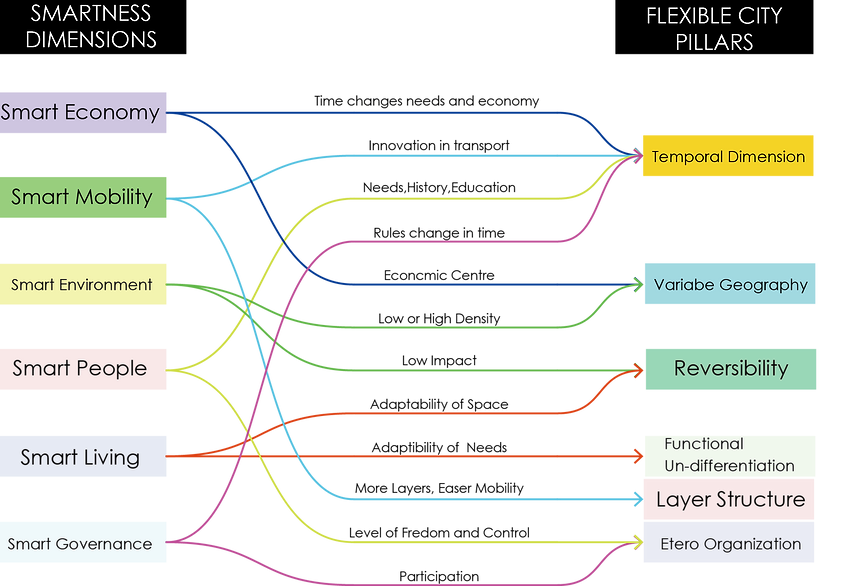
LAYERCITY
a study of Layer Structure for Smart People
Analysis
We analized the needs of each category of users of the city. The needs are also divided in groups according to the dimensions of the Smart City.
We gave a score of importance from 1 to 5 to each dimension of needs for every category.


We then calculated the average importance of each kind of need

but HOW does flexibility fulfil these needs?
We linked the smartness dimensions to the flexibility pillars based on how we thought that they could relate to each other.
The flexibility pillars of “time” and “organization” relate to people and change, the others relate more to space and therefore to planning.

SPACE
Based on the links that we established between the needs of smart cities and a flexible way of planning, and on our previous analysis of smart needs for categories of people, we identified which flexibility elements were most suitable for satisfying the needs of each category of users.
STUDENTS
-
REVERSIBILITY
-
FUNCTIONAL UN-DIFFERENTIATION
-
LAYER STRUCTURE
WORKERS
-
VARIABLE GEOGRAPHY
-
LAYER STRUCTURE
INHABITANTS
-
VARIABLE GEOGRAPHY
-
REVERSIBILITY
-
FUNCTIONAL UN-DIFFERENTIATION
-
LAYER STRUCTURE
TOURISTS
-
VARIABLE GEOGRAPHY
-
REVERSIBILITY
-
LAYER STRUCTURE